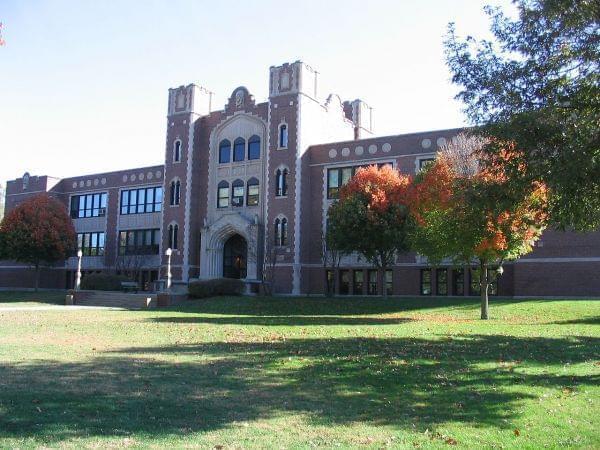U Of I Professor: Restorative Justice In Schools Requires Buy-In From Community

The implementation of a restorative justice program at Urbana High School, pictured above, and Urbana Middle School created tension between administrators, school staff and families. Dori/Wikimedia Commons
Schools in Illinois and across the country are turning to restorative justice practices as an alternative to traditional discipline models. Mikhail Lyubansky, an associate professor of pyschology at the University of Illinois Urbana-Champaign, studies restorative justice, and he's written about some of the criticisms of the way it's used in schools.
While more schools are implementing restorative justice programs, Lyubansky says the educational community is still in the experimental phase — meaning schools don’t yet have a model to turn to that spells out what restorative justice should look like in an educational context.
Lyubansky spoke with Illinois Public Media about the characteristics he believes define a successful school-based restorative justice program.
This interview has been edited and condensed for clarity.
Do we know what a successful restorative justice program looks like in a school setting?
I think rather than talking about a specific program, I'll describe some of the characteristics I look for. One of them is a willingness of school administrators to themselves engage in restorative practices with their own conflicts and with conflicts between adults in the building. A second thing that I would look for is the participation of youth and families in the creation of the restorative system — the set of agreements about what will we do when we have conflict and we were going to come together to work it out. So rather than something that's dictated by the top administrators, restorative justice is intended to be a collaborative process, a community-owned process, and that includes those who are most likely to be impacted by these policies, which are the young people that are likely to have contact with the discipline system or with the restorative system.
The third one is, is there a sense of voluntariness? So one of the core values is that restorative justice is voluntary. The more voluntary the participation, the more restorative the outcomes. Does everybody have access and do young people want to make use of this system? And then if we can see that there are some subgroups in a school, let's say students of color, who either almost never activate the system or refuse to participate in the system consistently, then it's feedback to us that there's something in the system that isn't working for that group. And we'd want to include them and figure out how to tweak it a way that it will work.
And what is driving the desire from schools, from state lawmakers, etc., to make restorative justice a practice of schools?
There's not a lot of debate that the conventional way of doing discipline in schools isn't working in the way that we want it to. We now know that a single suspension in year one of high school essentially doubles the risk of dropping out of high school, and dropping out of high school triples the risk of incarceration at a future time. So, in some ways, probably the worst thing that we can do with young people is to remove them from the building through suspension. Certainly incarceration is associated with pretty much all the outcomes we don't want. I think there is an increasing awareness that we need alternatives, and the two alternatives that have been proposed and have gotten the most support are various types of social emotional learning programs and restorative justice.
You've written about some of the criticisms of the use of restorative justice in schools, which is that it takes too much time, it's emotionally draining, it puts too much of a burden on the victims of harm. Another big criticism is that the practice lacks accountability. Can you explain the difference between accountability and punishment?
School discipline is modeled on the criminal justice model. Who broke the rule? What's the right punishment? And so that's the accountability. Accountability in a conventional justice system is equated with punishment. In restorative justice, we focus not on the punishment but on understanding and on the agreements to make things right. The accountability comes from having to face and listen to the people that were harmed and understand the impact of your actions on other people and to collaborate with them to figure out how to repair the harm. For some people, that sounds soft. When I work with some of the young people in the local juvenile detention center, when I talk to them about restorative justice, most of them aren't interested. You know the idea of kind of sitting down and having that kind of dialogue is not necessarily appealing. So the accountability comes from understanding impact and having to confront how to make things better.
Follow Lee Gaines on Twitter: @LeeVGaines
Links
- Don Owen Out As Urbana Schools Superintendent
- Urbana Schools Staff Criticize School Board Over Audit Report
- Urbana Schools Audit Triggered By Hiring Concerns, Union Grievance
- Audit Report Points To Problems In Urbana Schools Hiring Process
- Urbana Schools Administrator Charged With Felony Eavesdropping
- Urbana Schools Staff, Parents Voice Support For Superintendent And New Discipline Model
- Urbana 116 Officials Promise Better After Fights At UHS

